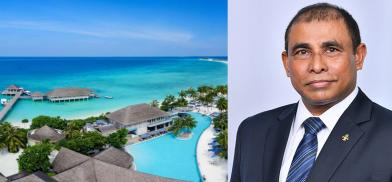How the gamble paid off for Maldives' tourism amid COVID-19
When Jasmin, a Swiss national, landed in the Maldives on Saturday, little did she realise that her arrival in the Indian Ocean archipelago would become a moment of celebration for the country’s tourism industry

When Jasmin, a Swiss national, landed in the Maldives on Saturday, little did she realise that her arrival in the Indian Ocean archipelago would become a moment of celebration for the country’s tourism industry. Reason: she was the 100,000th tourist to the Maldives since it took the risk to reopen its borders on 15 July.
The Maldives had set the target of 100,000 arrivals for the remainder of 2020 when it reopened for tourism. A country of half a million people, the Maldives' economy depended on tourism, with usually thrice its population visiting this high-end tourist destination every year.
In March, when the COVID-19 global pandemic hit the world, the tourism industry had come to a sudden halt. The pandemic dealt a major blow to the lives and livelihood of people living on these pristine islands. To control the spread of the virus, the government announced the closure of its borders on 27 March.
Tourism used to contribute around 78 percent of the total revenues, mostly foreign exchange. When it became clear the lockdown could last long with no sign of an early revival of the industry, it followed by the firing of thousands of employees from tourist resorts and guesthouses.
Four months into the lockdown, the Maldives came to a hard conclusion that the option of border closure and travel ban, that is available for the other nations, won’t work for the country. The Maldives had to fight two battles at the same time: containing the spread of the COVID-19 without keeping the borders closed.
The man who took on the challenge was the country’s tourism minister Abdullah Mausoom. Mausoom, a veteran of the industry, who was entrusted with the responsibility of the tourism ministry in August by Maldives’s President Mohammad Solih.
With just a hundred tourists on 15 July, the government opened its borders and allowed tourism. Travelers were given a 30-day free visa upon their arrival, with no requirement for negative RT PCR tests. It was a bold but risky decision at the time.
The country had already received 400,000 tourists before it closed its border. In July, it set a revised target of a further 400,000 arrivals by the end of 2020 but realized soon that would be impossible to achieve as many countries and airlines still not allowing travel.
The government further revised the target to 100,000 arrival - still an ambitious one to achieve, given the fact that a handful of airlines from a few countries were operating to the Maldives.
In October, the country allowed guesthouses and hotels to reopen in the residential islands. The Health Protection Agency (HPA) - the top body to manage the COVID-19 crisis - ramped up the country’s health infrastructure, increased beds, and ICUs capacity in hospitals. Authorities anticipated the risks of travelers carrying the virus to the Maldives residential islands.
With the help of the industry and other stakeholders, the government launched promotional campaigns in many countries to market the Maldives as a safe travel destination. No crisis lasts without innovation. The Maldives, with the help of private sectors, introduced short-term health insurances for tourists at nominal charges to cover the cost of hospitalization, transportation, isolation facilities in case one gets infected with the virus in the country.
Furthermore, the government signed agreements with countries to create air bubbles. Many airlines, currently around 20, started their operations to, and from, the Maldives.
As 2020 comes to an end, the gamble seems to have paid off. Despite reporting a total of 13,326 COVID-19 cases, the country’s active case daily count rarely crossed 1000. By Saturday, there were just 631 actives COVID-19 cases.
On Saturday, 12 DecemberT the Maldives achieved its Target 2020. Coincidentally, it also happened to be the anniversary day for the tourism ministry.









Post a Comment